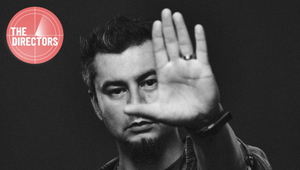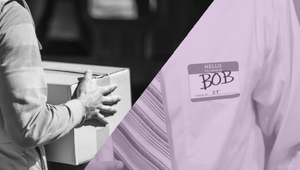
"Problems Arise When There’s a Mismatch of Expectations on Both Sides"

Pete Markey, chief marketing officer at Boots, is a Marketing Academy Mentor, winner of Marketer of the Year, and regularly features in Marketing Week's Top 100 most effective marketing leaders. Pete has twice been awarded champion of Diversity and Inclusion in the industry and is currently busy helping Boots change the face of omnichannel marketing.
In his session with OLIVER’s deputy group CEO, Sharon Whale, he discusses Boots' ongoing digital transformation journey, and the role in-housing has played in adapting to the needs of the modern consumer.
Q> OLIVER recently designed and launched a new in-house agency with Boots. Can you talk to me about the purpose of that and how it helps you solve some of the challenges you face as a brand?
With in-housing, what you’re doing is bringing in expertise that you don't currently have within a brand; this has allowed the Boots ecosystem to come to life.
Now, we have a great relationship with our main agency, which provides all our strategic input with things like our soon-to-be rolled out Christmas campaign, while working alongside a bunch of smaller agencies. Boots also have an in-house studio called the B-Hive which works on some of our digital assets, screen designs, and content.
But what we were lacking was teams with experience in the retail space, particularly in in-store environments, who could move at the same fast pace as the industry. What worked five years ago when it comes to driving trade and footfall has moved on a lot, so we needed to find an agency partner to work with to update what we do in-store, as a part of a multi-omni-channel environment; driven by shopper insights and research.
OLIVER is that partner.
With them, we’ve created an in-house agency with a specific focus on in-store, but they’re also now working on wider content for us. The level of expertise they’ve brought to the table has been incredibly helpful; it’s all about speed to market through updating and modernizing our production. There’s obviously a cost benefit too, but that wasn’t the key driver for the partnership. Anyone can do cheap work, but what we needed was great quality work. From the start, we set a high benchmark with OLIVER to keep delivering amazing, fantastic workgroups, helping us move forward in modernising what we do and helping us do it in a more efficient way as well.
Q> From a client perspective, what's involved internally? How do you drive the process through, understanding what capabilities you need, while navigating the relationship between the agencies? Can you talk a little bit about that process?
It’s a long process. I think there needs to be a narrative of what role marketing plays in the business, and I find a one-pager outlining the overall strategy really helps in keeping everyone focused on where they fit into what we’re trying to achieve.
Modernising and strengthening what we did with our existing agencies, in-line with OLIVER’s in house team’s plans for in-store, helped align all activity with our overarching vision and strategy.
Q> Having experienced in-housing models multiple times over the years, what would you say are the common hurdles or challenges you’ve come across when implementing in-house agencies?
I think the key starting point is to have a clear brief of what it is you’re wanting to achieve as a client, and then what role you want the agency to play in that. Problems arise when there’s a mismatch of expectations, on both sides.
From there, implementation is important. We must invest in people in order to have the right talent to achieve what it is we’re setting out to do, especially during the transition and onboarding period. Never underestimate the need to resource up in that initial stage, so that all elements are set up properly and ready for your teams to run with. Take tech, for example. Navigating how one team’s tech is working with another’s, is key. If one’s using Apple Macs, and the other isn’t, what problems may arise there?
Scoping out all of the potential issues before launching an in-house agency model needs to be a part of the basic planning stage, to allow for a seamless transition.
Q> Staying on the topic of technology, what role does it play in Boots’ vision, and how do you think in-housing has helped with that?
I think technology plays a massive part in our business now. With OLIVER, you get access to their OMG tool, which is a way of asset management and managing all workflow through the team. That has already been massively helpful.
Aside from that, we've invested in the Adobe Marketing Cloud, which has been vital in helping us to unlock the ability to connect with our advantage card holders via more personalised targeted activity.
Today, 43% of the media we buy uses First Party Data, enabling us to offer more personalised, targeted activities. So, all that technology has already proven to be incredibly useful.
Additionally, our Partners that are in what I call the ‘new tech space’ are helping to drive our strategy moving forward, allowing us to adapt and better serve our customers.
Q> Marketers are always looking to produce work and devise processes with speed, agility, efficiency and effectiveness at the core; all with potentially limited marketing budgets next year. How do you build that into your planning?
I think it all goes back to having that really clear vision of what it is you’re setting out to do as a business, and who needs to be involved in the process of that.
From there, you can align teams on KPIs that all feed into the broader business plan, helping to shape a clear expectation process while maximising the impact of the teams’ various areas of expertise.
Q> You’ve been through the in-housing process a few times now, what do you think is the impact in housing has on brand growth?
I think that speed to market is key. I’ve worked in a variety of industries, like banking and retail, which I thought were fast, but the markets Boots operates in are fascinating - there’s so much going on and changing all the time.
We operate in pharmacy, health and beauty, offering services including flu and covid jabs, and delivering eye and hearing care. It’s truly an amazing business, and each of the markets we’re in, move so quickly.
Long gone are the days when you can spot an opportunity, get a meeting to discuss it booked a week later, then have something ready to launch a month later. Those opportunities are happening now, and they require immediate action.
Having an in-house agency partner like OLIVER means we can fast-track work to seize opportunities there and then. It also allows us to link everything back to the tech systems we’ve invested in, connecting our data to our media channels for more meaningful and impactful work delivered at speed.
Q> One of the key mantras that you often mention is winning around the edges. Do you want to expand on what that means to you?
All businesses have a core trading plan. At Boots, it’s our £10 Tuesdays, which offers savings on both premium and day-to-day products. So that’s a major activity on our core trading plan. But there will always be opportunities in trade around the edges to act on. Perhaps a competitor has moved in a particular area? How quickly can you move to respond or counter that, or even offer something unique to the market? You can make the most of those opportunities to drive sales, but only if you have the right technology and business set up to do so.
Q> What are the three key lessons you’ve learned about in-housing successfully?
Number one: it all starts with your strategy. Determine what it is you are trying to do as a marketing team, and how does that impact recruiting? Think about how all that fits into the overall business strategy. The second thing is to be clear on what you're trying to achieve and what the expectations are for all teams. My view is, if it starts from that ‘we want to save money’, it’s not necessarily wrong, but what else do you want to achieve? And the third thing is, once you get to that implementation stage, surround yourself with brilliant people and over-invest in resource your side, you will not regret it.
Q&A with the audience
Q> Why did you choose to go with OLIVER over setting up your own in-house agency? Secondly, what was the reaction of your existing in-house agency, The B-Hive, to bringing OLIVER in?
Two great questions.
Let's start with the first one. It was really to do with the expertise that OLIVER brought. We went out to market with a pitch process with four agencies, and it all came down to the best fit for our business. OLIVER had a great understanding of Boots and brought a huge number of skills in the retail space.
I’ve been blown away by the work they’d prepared, we could see immediately the difference, it was head and shoulders above the rest.
They brought real expertise backed by research and insight looking at how people go in store, the journeys they go through and the things they look at and don't look at.
They also weren’t afraid to challenge our thinking. It was clear they really understood us and our customers and would challenge us, moving the work on while bringing that core skill and expertise.
We felt that would be difficult to hire in. We could pull in a bunch of creatives, but they wouldn’t have the insight OLIVER does on modern retail.
The B-Hive is great, they were in fact a part of bringing OLIVER in, to work alongside us. Now, both can utilise tech OLIVER brought in on separate projects. So really, we invested in strengthening what they do, while also investing in OLIVER, allowing us to tap into each other’s expertise. Together, the two teams are a powerhouse with clearly defined roles, so there were never any feelings of being threatened by one another.
For more insights on Boots’ journey with OLIVER and in-housing, you can watch the highlights from The Inside Track where Pete discusses the implications of marketing in a privacy-first era.















